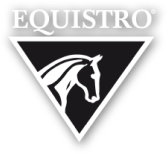
Copper
Copper has antioxidant properties and is the main element of several enzymes involved in the synthesis and maintenance of elastic connective tissue, blood cell formation, function of the central nervous system, and melanin synthesis.
Sources
The copper concentration of common feedstuffs ranges widely from approximately 1 mg/kg for corn to 80 mg/kg for cane molasses. Salts such as cupric chloride, cupric sulphate and cupric carbonate are effective supplemental copper sources.
Daily requirements
- 10 mg/kg dietary dry matter (DM) - 0.2 to 0.25 mg/kg body weight, depending on the exercise
- Max: 250 mg/kg ration
Deficiency
Reported are the following: Osteochondrosis, osteodysgenesis, lamness, epiphysitis, limb deformities. Fatal rupture of the uterine artery in aged, parturient mares.
Excess
Although horses are relatively tolerant of high dietary copper concentrations: inhibition of collagen synthesis, a loss of bone density, acute haemolytic anaemia and icterus, lethargy, hepatic and renal damage, gastrointestinal disturbances, death.
Important to know
- Pregnant mares and foals have increased copper requirements and it is recommended to supplement them with 20 mg Cu/kg dry matter
- Absorption of copper declines with age
- Low apparent copper absorption coefficients (3-8%) were reported in horses fed with lucerne hay
- In case of too important zinc, calcium and iron intakes, copper absorption will be reduced and leads to deficiency






